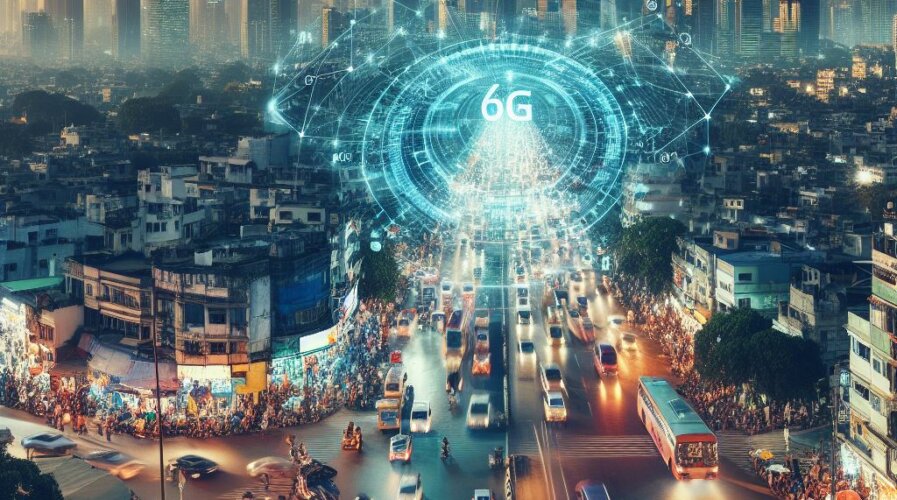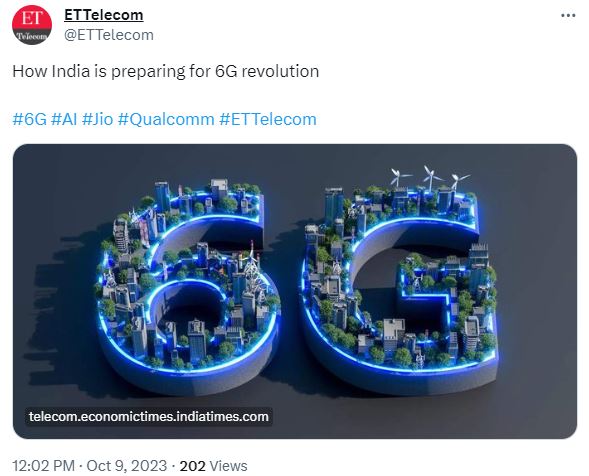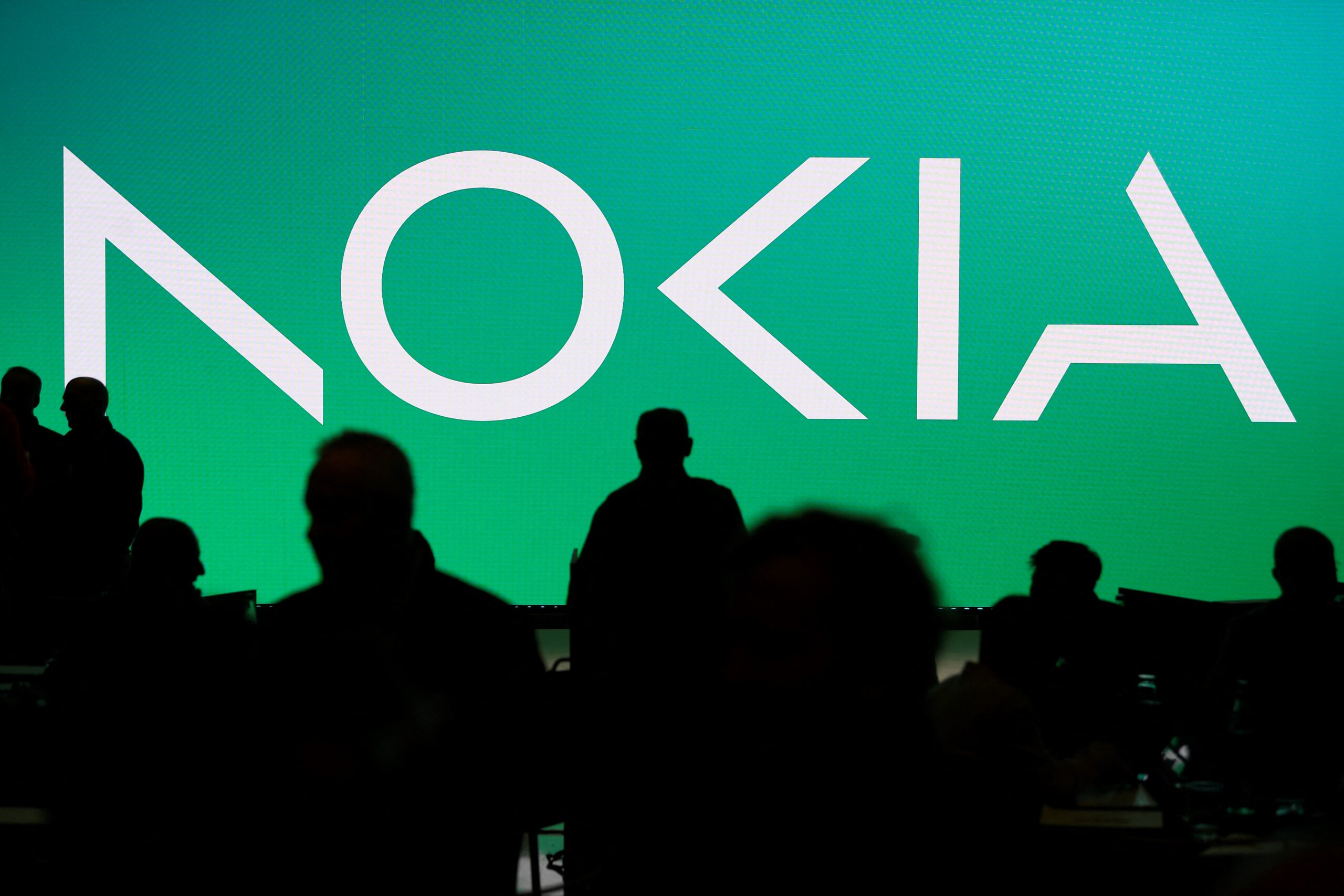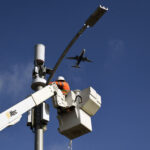
India wants to be a leader in 6G by 2030. Image Generated with AI.
Nokia plays an important role in India’s 6G vision
- Earlier this year, the Indian Prime Minister unveiled India’s 6G Vision.
- India aims to be a 6G innovation hub by 2030.
- Nokia has been developing 5G technology in India and now looks to continue with 6G.
India may be a latecomer to 5G deployments but the country is definitely taking the right steps to ensure it remains a key player in the global network industry. 5G in India was only available from August 2022, with services offered by two mobile operators, Airtel and Jio, with roll-out in just 13 cities by October 2022.
Fast forward a year, the two mobile operators continue to increase their 5G network deployment on the subcontinent with services now reaching over 10,000 cities. Despite competing with each other, both telco companies remain committed to India’s 5G agenda. 5G mobile phones in India have also seen increased sales since the network was made available.
According to a report by GSMA, there will be four 5G networks in India by the end of 2025. Apart from Jio and Airtel, the other two providers will be Vodafone Idea and the state-run Bharat Sanchar Nigam Limited.
Swedish telecom company Ericsson’s Consumer Lab’s Global Survey stated that India currently has about 100 million 5G users and this figure could grow, especially with Indians enjoying high-quality daily engagement with apps, such as streaming high-definition video, video calling services, mobile gaming and augmented reality.
Jasmeet Sethi, Head of Ericsson Consumer Lab, said, “The findings from our global survey underscore India’s potential to lead the way in 5G adoption and usage. With a substantial portion of the population ready for 5G, the opportunities for innovation and growth in the Indian market are immense. Even as app experience is emerging as a key factor in driving satisfaction with 5G, 5G has elevated the overall network satisfaction in India by an impressive 30% compared to 4G.”
Nitin Bansal, Head of Ericsson India and Head of Network Solutions, Southeast Asia, Oceania, and India at Ericsson, anticipates that mmWave technology will serve as the foundation for the next wave of 5G growth in India, given the rapid adoption of 5G, escalating data traffic, and the introduction of Fixed Wireless Access (FWA) offerings by service providers.

India has big 6G ambitions.
From 5G to 6G
Despite India’s focus on 5G, the government is also committed to the development of 6G technology. In March 2023, Indian Prime Minister Narendra Modi presented India’s 6G Vision manifesto in which he envisioned the country as a front-line contributor to the design, development and implementation of 6G technology by 2030.
But what exactly is 6G?
If 5G was meant to take network communications to the next level, enabling better automation through lower latency among other advantages, 6G takes it to a whole new level. Nokia describes the 6G era as when the digital, physical, and human worlds will seamlessly fuse to trigger extrasensory experiences.
6G use cases could include the use of holograms, improved generative AI solutions for healthcare, digital twins, improved cybersecurity, and defense programs as well as use in aviation.
Currently, 6G is being developed by several other countries, including China. China, already a leader in 5G, is hoping to lead the development of 6G. According to reports, China has already made significant progress in 6G by achieving 100Gbps wireless transmission, which could pave the way for future 6G networks.

India wants to be a leader in 6G by 2030. (Photo by Josep LAGO / AFP)
India wants to be a key player in the development effort as well. Hence, the country’s 6G vision as highlighted by the India Brand Equity Foundation (IBEF) will focus on the following:
- To enable India to become a major provider of IP, goods, and services for cost-effective 5G, 6G, and other telecom solutions in the future.
- To implement 6G technologies by 2030 so that India can use them as a powerful force multiplier.
- To encourage and support Indian participation in organizations that develop standards.
- To form alliances with other international technological alliances and organizations as well as comparable 6G Global Alliances.
- To take into account India’s priorities for contribution to 6G and other upcoming global technological standards, deployments, products, operations, and services.
- To support the ecosystem for use cases, pilots, research, design, prototyping, development, proof of concept testing, IPR creation, field testing, security, and manufacturing of telecom goods.
- To research, suggest, and enable the inclusion of national standards in Indian and international standardization organizations.
- To develop suggestions for improving India’s readiness for the implementation of the Bharat 6G Vision.
- To bring together academic institutions, domestic industries, research and development organizations, test labs, government organizations, telecommunication service providers, technology, and innovation start-ups, etc., as well as the Government of India, in order to “foster synergies” for a balanced expansion of the nation’s technology and innovation ecosystem for the benefit of the public.
- To list research priorities with input from all parties, including business, academia, and service providers, and to include theoretical and simulation studies, proof-of-concept prototypes and demonstrations, early market interventions, and start-up-led initiatives.
“India’s pursuit of 6G technology is a key step towards becoming a digitally enabled society. India, with its enormous population and fast-expanding digital infrastructure, stands to benefit greatly from the development and implementation of 6G technology. However, the widespread adoption of 6G in India will necessitate major investment in research and development, as well as infrastructure modifications to accommodate the new technology,” stated the IBEF.

Nokia has been investing and developing 5G technology in India. (Photo by Josep LAGO / AFP)
Nokia in India
Nokia believes that India is expected to emerge into a trillion-dollar digital economy by 2030. For Nokia, the implementation of 5G and associated technologies will not only help drive digital transformation to achieve the goal of digital inclusion and connected society but also empower communication service providers (CSPs) and enterprises to reshape their business models to launch innovative services.
With 369 million 5G subscribers predicted by 2026, Nokia is also making sure that it remains part of India’s 5G mission. The Finnish company is already manufacturing 5G NR and 5G Massive MIMO equipment at its Chennai factory that can satisfy domestic demand and the ongoing export of 5G equipment to other countries.
Nokia’s global delivery centers in Chennai and Noida are already handling 5G network operations in several countries and the strong pool of 5G skilled workforce could support the Indian CSPs to scale for 5G launch. Nokia’s R&D center in Bangalore is playing a key role in developing local ecosystem partnerships to develop 5G use cases. Nokia in association with NIIT and COAI (Cellular Operators Association of India) also launched a 5G certification program – a first-of-its-kind for professionals and organizations across India.
One more step towards PM @narendramodi Ji’s vision of making India a hub of innovation in 6G.
▶️ Inaugurated the Nokia 6G research lab, Bengaluru pic.twitter.com/4S1wYPLd9y
— Ashwini Vaishnaw (@AshwiniVaishnaw) October 5, 2023
Nokia’s 6G plans for India
Given India’s 6G vision and Nokia’s commitment to the development of 6G, both entities continue to work together. Nokia already has a strong presence in India, especially in 5G development. Now, the company is hoping to play a part in India’s 6G vision too.
Nokia is engaged in several global projects and regional initiatives with industry peers, customers, academia, and research institutions. This work aims to form a common view and direction for 6G, including 6G Hexa-X and Hexa-X-II, the first and second phase of the European 6G Flagship. Nokia is also a founding member of the Next G Alliance which is helping to drive the 6G ecosystem in North America and coordinating the German Lighthouse project 6G ANNA.
In India, Nokia has established a 6G Lab at its Global R&D center in Bangalore. The project aims to accelerate the development of fundamental technologies and innovative use cases underpinned by 6G technology that will address the future needs of both industry and society. The lab will function as a platform for collaboration among industry stakeholders and facilitate testing innovative solutions while establishing their potential for commercialization.
Features of the 6G lab include a setup to research ‘Network as a Sensor’ technology that enables the network to sense objects, people and movement without the need for on-board sensors. A key enabling technology in the 6G era, ’Network as a Sensor’ supports the vision of bringing the digital and physical worlds together. Sensing will be fully integrated into the wireless network and operate simultaneously with communication services.
“The inauguration of the Nokia 6G research lab in Bengaluru is another step towards PM Narendra Modi’s vision of making India an innovation hub. Interesting use cases coming out of this lab will be related to transportation safety, health care and education which will be another big contribution to the entire Digital India suite,” said India’s Minister of Railways, Communications, Electronics & IT, Government of India, Ashwini Vaishnaw
Nokia’s experts at its Bengaluru center will support India’s ambition to make notable contributions towards global 6G technology standards. It is in the process of building research collaborations with institutions in India like IISc/IITs to further scale up the 6G research initiative.
While India may not have been the fastest in 5G deployment, the government’s vision in 6G as well as the partnership with the private sector could see the country innovating 6G use cases in the future, and even end up being a leader in 6G technology.
READ MORE
- 3 Steps to Successfully Automate Copilot for Microsoft 365 Implementation
- Trustworthy AI – the Promise of Enterprise-Friendly Generative Machine Learning with Dell and NVIDIA
- Strategies for Democratizing GenAI
- The criticality of endpoint management in cybersecurity and operations
- Ethical AI: The renewed importance of safeguarding data and customer privacy in Generative AI applications






